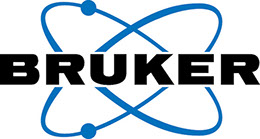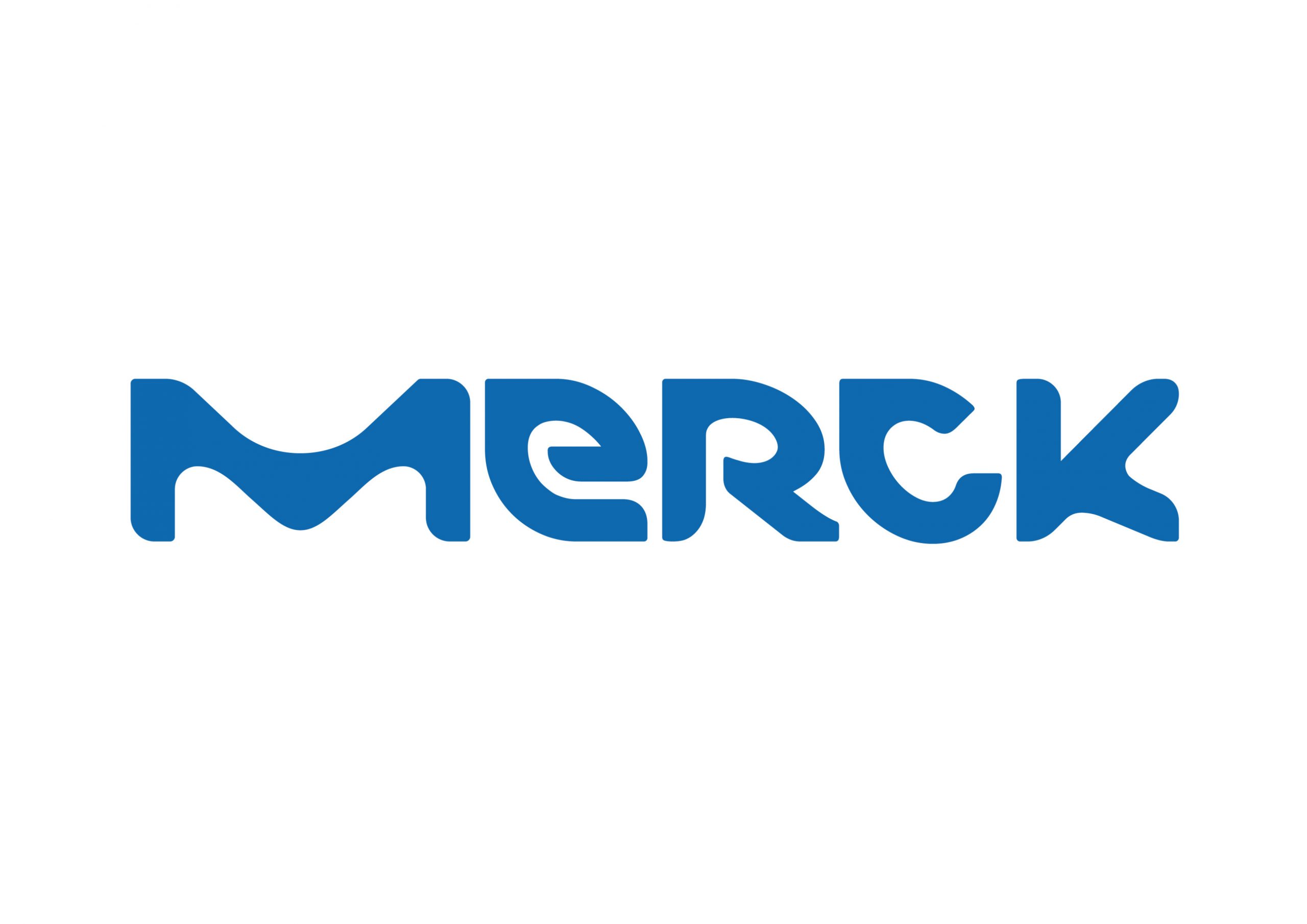
Webinars
A webinar series on the subject of validation in NMR spectroscopyTo attend this virtual event, you must register. Once accepted, you will receive by email the link to attend the webinars. Each talk will last 20 min and be followed by a short Q&A session with the speaker. Lectures will be recorded and made available to members on the ValidNMR web site.
NEW!! To view past webinar presentations, please go to our Members Area (login required).
Our past webinars
Webinar #6 on 16th December 2021 - Xmas Special
10:00 in Washington DC, 16:00 in Berlin, 03:00 PM in London
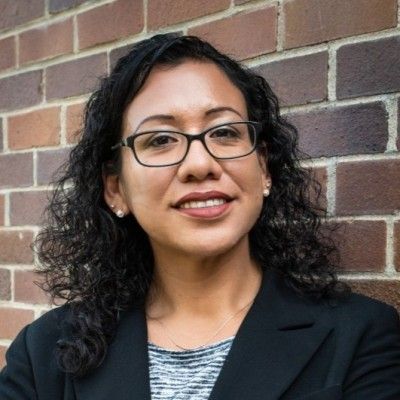
Jacqueline Thomas
Procter and Gamble
Talk #1: Applied pKa Determination via NMR to Aid Surfactant Understanding
Speaker: Dr Jacqueline Thomas, Procter and Gamble
Abstract: This presentation will highlight the co-creation process of Analytical working with modelers to go after relevant parameters for building models. The seminar will cover the measurement of pKa’s of SDS/CAPB by NMR. The use of pKa determination by NMR is often over looked and sometimes long forgotten art. The methodology for pKa determination and best practices of the measurement will be discussed.
Biography: Jackie Thomas is currently a Group Scientist at Procter & Gamble. She joined P&G in 2008 and is currently part of the Corporate Functions Analytical group where she focuses on Polymer Characterization and Complex Mixture Analysis using NMR methodology. She earned a Ph.D. Degree in Physical Organic Chemistry from Texas A&M University under Dr. D. Singleton and a B.S. Degree in Chemistry from Texas A&M University-Kingsville. Jackie is a member of ACS, was the Chair of the Local Cincinnati Section in 2016, currently is ACS Career Consultant, and advocate for the ACS Scholars Program. Jackie is married, has two sons, and enjoys spending time with family outside.
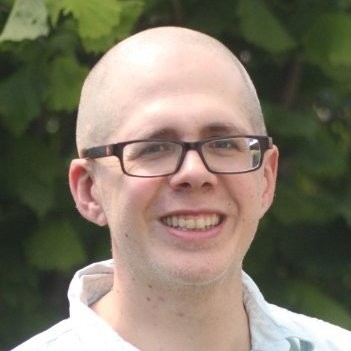
Patrick Giraudeau
University of Nantes
Talk #2: Determination of absolute concentrations in complex mixtures with quantitative 2D NMR
Speaker: Prof Patrick Giraudeau, Professor at the University of Nantes
Abstract: Complex mixtures are ubiquitous and include pharmaceutical samples, biological fluids or extracts, and also samples undergoing chemical reactions. NMR is ideally suited to address the challenge of quantifying mixture components with a broad diversity of chemical structures and concentrations. However, one-dimensional (1D) 1H spectroscopy, the most widespread approach, is strongly limited by the numerous peak overlaps that prevent the accurate quantification of mixture components. This limitation can be overcome by multi-dimensional NMR, and particularly by 2D NMR, albeit at the cost of a longer experiment time and of several specificities associated with the use of multi-pulse sequences.
In the last few years, we developed an ensemble of fast and quantitative 2D NMR approaches for the accurate analysis of complex mixtures. Most of these methods combine accelerated 2D pulse sequences such as ultrafast NMR, spectral aliasing or non-uniform sampling, with analytical chemistry methods such as external calibrations or standard additions. They provide efficient solutions for the accurate quantification of targeted compounds in mixtures, but also for the untargeted analysis of large sample collections. More recently, we have also developed intrinsic quantitative 2D NMR methods that bring new solutions into the quantitative toolbox.
We will illustrate the principle of these different quantitative 2D NMR approaches and discuss their practical advantages and limitations for a variety of practical situations where complex mixtures are involved.
Biography: Prof. Patrick Giraudeau leads the analytical chemistry research team and the NMR facility at the CEISAM institute, a joint research unit of Univ. Nantes and CNRS. Patrick Giraudeau received his Ph.D. in 2008 from the Univ. Nantes, then he worked as a postdoctoral researcher at the Weizmann Institute of Science (Israel). In 2009, he became an associate professor at the University of Nantes, and was promoted to full professor in 2017. In 2014, he became a fellow of the Institut Universitaire de France, and received a consolidator grant from the European Research Council in 2018. His research group activities at the CEISAM research institute are focused on the development of quantitative NMR methods for the analysis of complex mixtures, including applications to metabolomics and reaction monitoring. Research highlights include the development of fast multi-dimensional quantitative experiments at high fields and also on benchtop spectrometers, as well as recent investigations in dissolution dynamic nuclear polarization. Patrick Giraudeau has authored 115 publications in peer-reviewed journals. He is associate editor of the journal Magnetic Resonance in Chemistry, the vice-president of the Ampere Society, a member of the Euromar board of trustees, and the vice-president of the French-speaking metabolomics society.
Webinar #5 on 18th November 2021
Guest hosts: Susie Riegel (Nanalysis Corp.), Juan Araneda (Nanalysis Corp.) and Taylor Neal (Procter & Gamble)

Edward Njoo
ASDRP
Talk #1: 1H and 19F qNMR on benchtop – pedagogical insight and research applications in real time reaction monitoring, analytical spectroscopy, and small molecule synthesis
Speaker: Edward Njoo, Sarah Su, Krithikaa Premnath, Jeslyn Wu, ASDRP
Abstract: Historically, the primary use of NMR spectroscopy has been in the elucidation of molecular structure. Moreover, recent advances in benchtop NMR spectroscopy has allowed benchtop spectrometers with multinuclear capabilities to be placed directly in the laboratory, lending to its versatility and accessibility not only as a means of structural characterization of small molecules, but also as a routine analytical technique complementary to HPLC, FTIR, LCMS, and GCMS. Here, we present pedagogical insights in introducing qNMR – internal standard choice and relaxation time parameterization – and lessons in designing qNMR experiments as a means of reinforcing the basics of NMR spectroscopy and understanding of chemical structure in an academic R&D setting. Moreover, we present a few examples of our use of qNMR on benchtop in our laboratory and disclose a number of examples where 1H and 19F qNMR on benchtop have enabled rapid reaction development in an academic synthetic chemistry research laboratory setting. Finally, we present a survey of different applications of NMR spectroscopy in real time reaction monitoring, including examples where NMR has become the analytical technique of choice.
Biography: Edward Njoo has multiple years of research experience in synthetic organic chemistry, biochemistry, and chemical biology. He currently serves as a board member and as Director of Research & Development at ASDRP, a nonprofit academic research institution located in the heart of the San Francisco Bay Area, where he also leads a vibrant group of high school research students in a number of projects that span medicinal chemistry, physical organic chemistry, natural product synthesis, and reaction methodology. In 2018, enabled by the cooperation of Nanalysis Corp., ASDRP became the first institution to bring benchtop NMR to a high school research laboratory setting, and today the students at ASDRP have access to two NMReady 60Pro spectrometers.
Sarah Su is currently in 11th grade at Los Altos High school, and has been involved in organic chemistry research at ASDRP since her freshman year. Currently, she is involved in the chemical semisynthesis and biological evaluation of novel analogs of berberine, a biologically active DNA-binding isoquinoline alkaloid, where she interfaces photochemistry, complex natural product synthesis, and biochemistry. Namely, she has been involved in using benchtop 1H qNMR as an analytical technique to trap and track production of singlet oxygen species in determination of photosensitizing efficiency of berberine and our synthetic analogs.
Krithikaa Premnath is a senior at Dougherty Valley High School. Since joining the group two years ago, she has been working on optimizing conditions for the Biginelli cyclocondensation reaction to enable rapid generation of 2,4-dihydropyrimidines, including novel analogs of monastrol and LaSOM63, both of which have been investigated as anticancer agents. Namely, our present work on the Biginelli reaction involve the implementation of benchtop qNMR for real time reaction monitoring. Krithikaa’s current interests include the development of scalable multi-component platforms for rapid analog synthesis in medicinal chemistry, as well as natural product total synthesis.
Jeslyn Wu is currently a senior at Mission San Jose High School. She began her research career as a rising freshman at ASDRP, where she worked under Avery Kruger tracking the carbon and nitrogen footprint of FUSD. A year later, she transferred to the Njoo group, where she began working on novel NNRTIs as potential leads for small molecule HIV/AIDS treatments. Jeslyn currently works on methodology and optimization of the palladium catalyzed Buchwald Hartwig reaction towards novel NNRTIs as well as semisynthesis of andrographolide analogs and the utilization of 19F NMR to enable syntheses of diarylpyrimidine compounds. Jeslyn’s current research interests include utilization of 19F nuclear magnetic resonance spectroscopy to enable real time monitoring and optimization of synthetic transformations that enable synthesis of next generation antiviral compounds, including an NMR-optimized synthesis of efavirenz and of fluorinated rilpivirine analogs.
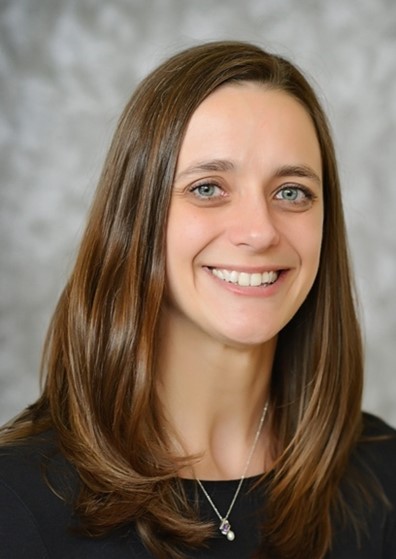
Laura Wysocki
Wabash College
Talk #2: Isospiropyran Synthesis: Using NMR to Measure Conversion in an Undergraduate Organic Lab
Speaker: Prof. Laura M. Wysocki, Wabash College
Abstract: In the standard Organic Chemistry curriculum, students typically learn about Aldol chemistry in the second semester, after they have mastered the basic techniques in the laboratory and practiced spectroscopic analysis. Drawing on recent collaborative research, this presentation describes an undergraduate lab that focuses on the synthesis of an isospiropyran dye and incorporates cascade reactions and solvent-free conditions. Dye synthesis often requires harsh conditions and long reaction times, but using 1H NMR analysis of a crude mixture allows us to measure conversion and approach interesting questions about small concentrations of the dye.
Biography: Dr. Laura Wysocki is an Associate Professor and the Chair of the Chemistry Department at Wabash College. She specializes in Organic Chemistry and her collaborative undergraduate research program focuses on the synthesis and study of fluorescent dye derivatives that can be used as sensors or enzyme substrates. Additionally, Dr. Wysocki’s scholarship includes an interest in chemical education, specifically related to science communication. In recent years, she received the Cottrell College Science Award and an NSF-IUSE Award to support this research. Dr. Wysocki earned her Ph.D. in natural product synthesis at the University of Wisconsin–Madison and completed a postdoctoral fellowship at Howard Hughes Medical Institute – Janelia Research Campus before joining the faculty at Wabash College in 2011. She has always been inspired by the interdisciplinary nature of science and enjoys working with undergraduates in her laboratory and classroom exploring new ideas.
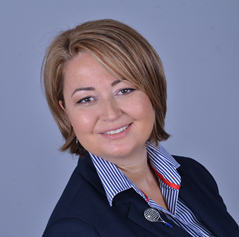
Aleksandra Zivkovic
Heinrich Heine University

Holger Stark
Heinrich Heine University
Talk #3: Teaching Basics of 1H-qNMR in Life Sciences
Speaker: Dr. Aleksandra Zivkovic and Prof. Holger Stark, Heinrich Heine University, Düsseldorf
Abstract: Nuclear magnetic resonance spectroscopy is one of the most important techniques in chemical and pharmaceutical research and, as such, is a focus in chemistry courses. In 2008 adverse events associated with the use of heparin were responsible for introduction of the first NMR based identification into the European Pharmacopeia (Eur.Ph.), and therefore also in pharmaceutical courses.
The availability of the low-field benchtop NMR instruments allowed us to develop practical student experiments as a part of an interactive scientific puzzle where each element supports the complex understanding of a set of information obtained from 1H-NMR measurements for students in life sciences. In teaching, we focused on both qualitative and quantitative measurements.1
Here, we focus on one of the experiments: relative quantitative determination of the therapeutically active ingredients of well-known marketed pain relief drugs (acetyl salicylic acid, acetaminophen (paracetamol), caffeine, and vitamin C)2,3,4. Multiple probes have been analysed within an undergraduate laboratory.
With this experimental design, the students were highly motivated to apply their knowledge on multiple aspects of 1H-NMR (spectra interpretation, data processing, chemical properties, chemical shift connections etc.).
References:
1. Zivkovic A, Bandolik JJ, Skerhut AJ, et al. Introducing students to NMR methods using low-field 1H NMR spectroscopy to determine the structure and the identity of natural amino acids. J Chem Educ. 2017;94(1):115-120. doi:10.1021/acs.jchemed.6b00168
2. Zivkovic A, Bandolik JJ, Skerhut AJ, et al. Quantitative analysis of multicomponent mixtures of over-the-counter pain killer drugs by low-field NMR spectroscopy. J Chem Educ. 2017;94(1):121-125. doi:10.1021/acs.jchemed.6b00105
3. Zivkovic A, Bandolik J, Skerhut A, et al. Low Field NMR Determination of pKa Values for Hydrophilic Drugs for Students in Medicinal Chemistry. Magnetochemistry. 2017;3(3):29. doi:10.3390/magnetochemistry3030029
4. Zivkovic, Aleksandra, Jan Josef Bandolik, Alexander Jan Skerhut, Christina Coesfeld HS. Govi Onlineshop – PZ PRISMA: NMR-basierte Lipophiliebestimmungen. Prizma. 2018;25:25-32.
Biography: Aleksandra Zivkovic is a chemist by education and made her PhD in Organic Chemistry at the Goethe University in Frankfurt, in 2005 on modified RNA. Afterwards, she did a postdoc working mostly on synthesis and development of siRNA for two years. Since 2007, she is working in the field of medicinal chemistry. In 2013, she started working at the Heinrich Heine University in Düsseldorf, as academic senior councillor continuing her research in medicinal chemistry.
Biography: Holger Stark is pharmacist by education and made his PhD in Medicinal Chemistry under the supervision of Prof. W. Schunack at the Free University of Berlin, Germany, in 1991 on newly designed prodrugs (BF2.94). During his habilitation at the same university he worked on neurotransmitter ligands, mainly at dopamine and histamine receptor subtypes for the central nervous system. In 2000 he became full professor at the Goethe University in Frankfurt, Germany and went in 2013 to the Heinrich-Heine-University in Düsseldorf, Germany where he has his actual position. He founded some start-up companies on cancer therapeutics (Warburg Glycomed, PSites Pharma) and has received several prizes for his successful research as well as for teaching. He received in 2016 a honorate docorate from the University of Nis, Serbia. On more than 370 book contributions, original papers, reviews and patents he has focused on neurotransmitter as well as on lipid signaling research. The developments of novel pharmacological tools for imaging and of ligands with designed selectivity are some of the highlights. He is co-inventor of pitolisant (Wakix®), the first histamine H3 receptor antagonist with market approval and has prepared some back-up (pre)clinical candidates in different leads for various targets. From 2004 – 2019 Holger Stark was editor-in-chief of the Archiv der Pharmazie – Chemistry in Life Sciences, one of the oldest journals on Medicinal Chemistry.
Webinar #4 on 30th September 2021
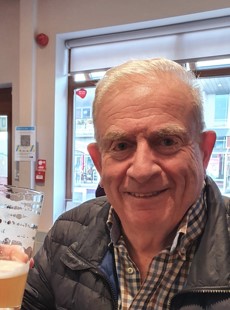
Talk #1: Introduction to line fitting
Speaker: Mike Bernstein PhD, Amber Analytical Services, UK
Abstract: The extraction of multiplet peak integration values is the fundamental currency of any quantitation by NMR. Traditional, “sum” integration is most often used for the purpose, but there are many instances where fitting the signals has a significant advantage. This talk will serve as an introduction to the topic, setting the scene for the following talks. Line fitting will be covered in more detail.
Biography: Mike Bernstein received his PhD from the University of British Columbia. His long association with NMR started at Merck Frosst laboratories, and his continuing interest in applied NMR for drug discovery and development continued at Astra Zeneca. He has worked closely with the qNMR community throughout his career at Mestrelab Research. Now, as company Director of Amber Analytical, he consults to the industry on NMR topics. He is active in the community via ValidNMR and qNMR Summit.
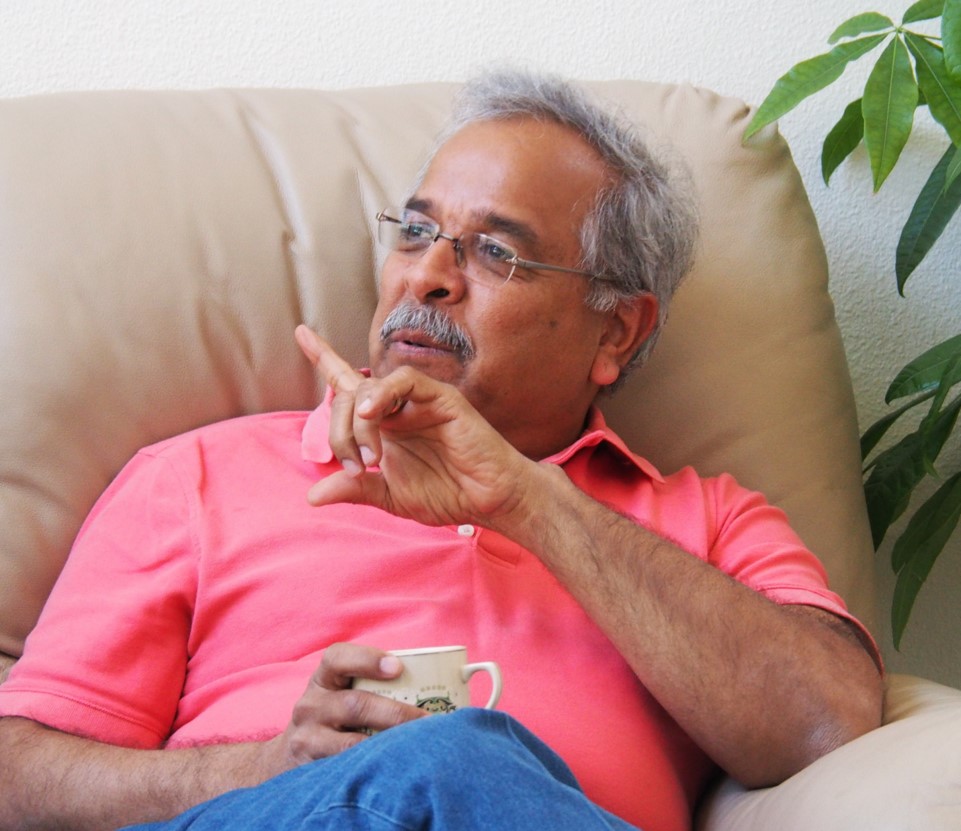
Talk #2: Complete Reduction to Amplitude Frequency Table (CRAFT)
Speaker: Dr. Krish Krishnamurthy, Chempacker
Abstract: The CRAFT (Complete Reduction to Amplitude Frequency Table) technique, based on Bayesian analysis approach, converts FID and/or interferogram (time domain) to a frequency-amplitude table (tabular domain) in a robust, automated, and time-efficient fashion. A brief introduction to CRAFT will be presented followed by a discussion of practical 1D and 2D examples pertaining to qNMR application of CRAFT. CRAFT redefines overlap, phase-correction, and baseline correction. We present examples of qNMR results based on CRAFT 1D analysis and demonstrate its validation and benefits. Quantitative of 2D nmr analysis is an emerging analytical tool. Analysis of 2D data by CRAFT presents unique opportunity for 2D qNMR. Example preliminary results of 2D qNMR by CRAFT will also be presented. CRAFT presents a potentially new paradigm in data processing that questions the need for hitherto unchallenged preprocessing steps, such as phase and baseline correction in 1D and zero-fill / severe apodization in 2D.
Biography: Krish Krishnamurthy was born and raised in Chennai, South India. He received his B.Sc. in chemistry (1974) and M.Sc. in Organic Chemistry (1976) from the University of Madras, India, before moving to Kent State University, Ohio for his Ph.D. in synthetic organic chemistry. His passion for NMR spectroscopy was kindled during his tenure as the NMR research assistant at Kent and he decided to pursue his research career in that field. After his Ph.D., he did post-doctoral research with Prof. George A. Olah at University of Southern California focussing on NMR applications in the study and dynamics of carbocation intermediates. He followed that with a position as NMR specialist at University of California, Berkeley. During the next 25 years, his research career shifted back-and-forth between Varian Instruments and the pharmaceutical industry.
Fittingly, Krish was mentored by James Shoolery himself in the Varian NMR applications lab and this reinforced Krish’s strong belief that state-of-the-art NMR methods should be made available for everyone. In this vein, he developed and administered the “Chempack” software package for Varian NMR users. In the spirit of Shoolery’s vision, the package was built for “ease-of-use without compromise of quality” – revolutionizing the ease with which even very complex NMR experiments can be run by the chemist. He has continued to maintain this very popular package for the last 20+ years as a community service.
Krish also contributed to the early development of many pulse sequence elements that are incorporated into everyday experiments we would all recognise – most notably CRISIS pulses (Compensation of Refocusing Inefficiency with Synchronized Inversion Sweep), BASHD (F1 BAndSelective Homonuclear Decoupling), IMPRESS (a hybrid Hadamard-FT method for improved resolution in 2D), and STEP (Selective Tocsy-Editted Preparation). He also developed key long-range correlation experiments such as EXSIDE (J-scaling method for effective long-range coupling constant measurement) and, in collaboration with Gary Martin, a variety of accordion based HMBC type sequences. Working across more than just spectroscopy, Krish has also led a microimaging team and developed an in-vivo osteoarthritis biomarker method based on the use of residual chemical shift anisotropy of H2O in cartilage and time domain data processing. Krish’s research now focuses on an unconventional data processing paradigm with the development of CRAFT, a Bayesian based approach to decimating time domain data (FID) into the tabular domain (Frequency-Amplitude-decay rate-phase) and its use in a variety of qNMR applications area.
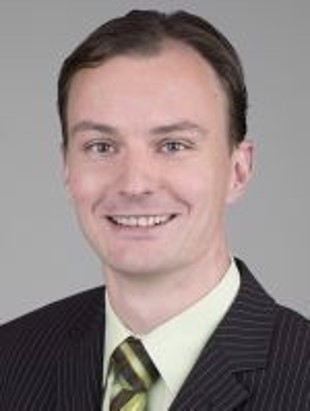
Talk #3: Spectral Hard Modeling
Speaker: Dr. Clemens Minnich, S-PACT
Abstract: Spectral Hard Modeling exploits the physical structure of a mixture spectrum – shaped peaks, grouped together in components, and scaled according to the mixture composition. Benefits emerge from the ability to properly handle peak shifts and shape changes by smart parameter adjustments, thus adapting correctly to spectral changes induced by composition change, molecular interaction, temperature changes etc.
Spectral Hard Modeling workflows are presented along typical application examples from both high- and low-field NMR spectroscopy.
Biography: Clemens is an educated chemist and chemical engineer, focusing on real-time spectroscopy for process analysis. Heading the applications activities at S-PACT, he has created PAT solutions based on optical spectroscopy for customers across all process industries – (petro-)chemical, Life Sciences, Pharma, engineering, … Routinely partnering with equipment partners, his main focus is on the data analysis and chemometrics part.
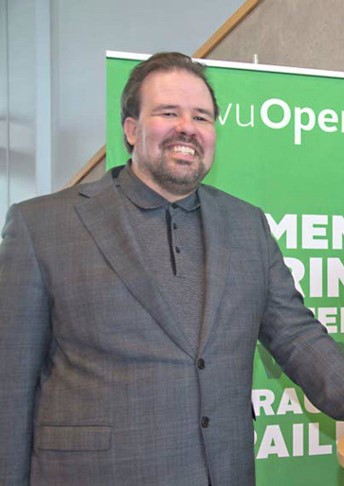
Talk #4: q2NMR: the QM-Approach to qNMR
Speaker: Dr. Samuli-Petrus Korhonen, NMR Solutions
Abstract: Taking advantage of the well-established quantum mechanical theory of NMR, the QM-Approach provides identity and purity information with a minimum set of parameters, namely populations, chemical shifts, coupling constants and line shapes. The QM-Approach also uses all information about the correlations between these parameters throughout the NMR spectrum to further reduce the ambiguity in the data, which also allows distinguishing even completely overlapping signals. Since chemical shifts (in ppm) and coupling constants are field independent, results obtained by the QM-Approach can be directly applied to analyze data acquired by any instrument.
Webinar #3 on 29th July 2021

Sponsor Talk: Lab Management, qNMR and GxP
Speaker: Dr. Fabrice Moriaud, Bruker
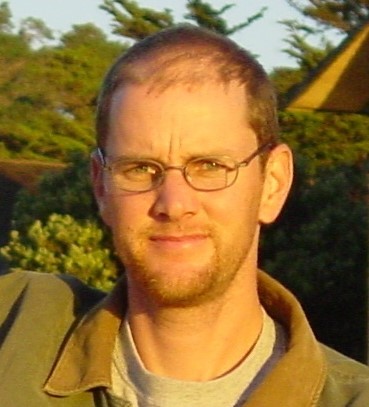
Talk #1: 2H SOLCOR: A novel tool for reducing volume variation as a source of error in external standard quantitative NMR
Speaker: Jason Ewanicki, Pfizer
Abstract: Tube to tube volume difference presents a challenge in obtaining accurate external standard quantitative NMR (esqNMR) results. Deuterium (2H) is easily observable, intrinsically quantitative, present in all samples, free of interfering signals, insensitive to probe tune/match and sample saltiness. These properties make 2H SOLCOR (2H observed SOLvent CORrected) an ideal tool for volume correction whenever difference exist between reference standard and analyte, such as esqNMR. We demonstrate a technique where 2H peak integrals from the solvent are used as a universal internal standard to correct volume variations in NMR tubes, thereby improving the accuracy and precision of esqNMR method. This simple yet effective technique is described in this talk. Practical considerations for successful implementation are investigated. 2H SOLCOR can be applied anywhere esqNMR is used, including where precious samples need to be accurately quantified for qualification as an authentic analytical standard. The technique also lends itself to accurate quantitation in situations where sample treatment is necessary. Paper
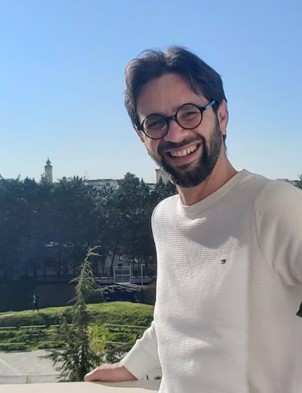
Talk #2: Community-built calibration systems for the development of non-targeted NMR methods
Speaker: Prof. Vito Gallo, Technical University of Bari, Italy
Abstract: In recent years, non-targeted analysis by Nuclear Magnetic Resonance spectroscopy (NMR) has being experienced an increasing number of applications. Among the possible application, non-targeted NMR has been focused with particular attention to food quality control and fraud detection.[1] The strong power of non-targeted NMR methods resides in the possibility to provides, for a given sample, statistically equivalent signals in spite of using spectrometers that are different in hardware features.[2]
Nevertheless, to date, no internationally agreed guidelines are available to regulate the procedures for non-targeted NMR analyses over different laboratories. Moreover, no official analytical parameters have been established so far to determine the repeatability and reproducibility of the applied protocols in this field. We recently provided some contributions to this research area by organizing inter-laboratory comparisons and elaborating the huge amount of collected data. A particular focus was dedicated to evaluating the reproducibility of the NMR analyses performed through different spectrometers and by many operators, by developing common calibration lines and validated classification models.[3,4] The effect of processing of data was investigated towards the development of more efficient chemometric analysis.[5] Nevertheless, the variability induced by the operator during the preparation of the NMR sample is still understudied.
In this presentation, as part of a collaborative research project, this aspect was taken under deep investigation. Thus, 65 samples of tomato collected from different Italian regions were subjected to the same strict analytical protocol encompassing the sample preparation and the subsequent NMR analysis. Such a protocol was performed by two different operators and utilizing two diverse spectrometers. The study provided useful insights into the effect of variations in the sample preparation, the protocol of analysis, and the processing of data on the reproducibility of the results. The results will be presented with the final goal to provide a methodological pipeline to assess the reproducibility of NMR data produced by different spectrometers and to create a community-built calibration system enabling identification of unknown sample by suitable NMR based classification systems.
[1] M. Bevilacqua, et al. TrAC 2017, 96, 42-51.
[2] Gallo V, et al. Anal. Chem. 2015, 87, 6709-6717
[3] Ragone R, et al. Food Chem. 2020, 332, 127339
[4] Gallo V, et al. Food Anal. Methods 2020, 13, 530–541.
[5] Musio B, et al. Talanta 2020, 214, 120855
Webinar #2 on 27th May 2021
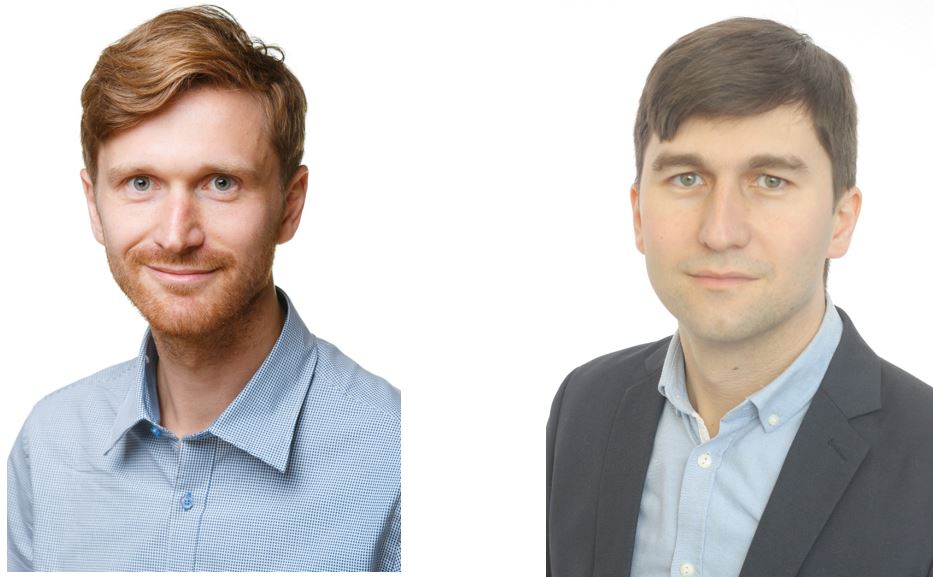
Dr Kristaps Jaudzems (left) & Dr Janis Veliks (right)
Latvian Institute of Organic Synthesis
Talk #1: Residual Solvent Signal of CDCl3 as a qNMR Internal Standard for Application in Organic Chemistry Laboratory
Speaker: Dr Janis Veliks & Dr Kristaps Jaudzems, Latvian Institute of Organic Synthesis
Abstract: An NMR spectrometer is a key instrument in the organic synthesis laboratory for structure determination, reaction control and compound purity analysis. In addition to qualitative analysis, the application of NMR for quantitative analysis (qNMR) is gaining popularity among synthetic organic chemists. qNMR allows for simple quantification of crude product mixtures, determination of reaction yields and purity of organic compounds. In this talk we will discuss possibility to use CDCl3 residual solvent signal as an internal standard for qNMR after quantification in the solvent batch. The talk will be presented by two speakers: synthetic organic chemist and NMR specialist, where each one will share his perspective on advantages and limitations of this approach. The presentation is based on the published research.
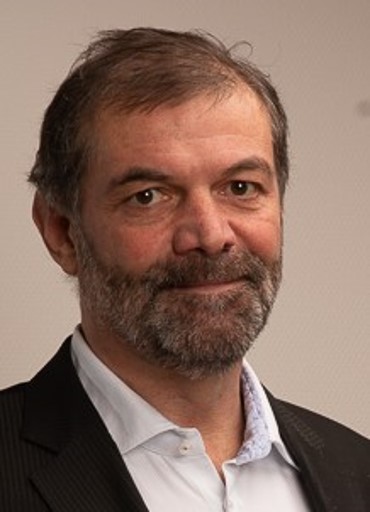
Prof. Dr. Bernd Diehl
Spectral Service AG, Cologne, Germany
Talk #2: Quantitative 17O and 35Cl NMR, new ways in redox titration monitoring
Speaker: Prof. Dr. Bernd Diehl, Spectral Service AG, Cologne, Germany
Abstract: Titrations have long been part of general laboratory work on quantitative analysis. They are based on the detection of reactions and reaction products. Manganometry, iodometry, complexometry, and others. Often it is a color reaction that determine a measured value. For some years now, we have had the ambition to make these methods directly visible on a molecular basis using NMR spectroscopy, and to define new areas of application, or to check the selectivity of classic methods. This is of course quantitative NMR and not based on pure 1H-NMR. In the field of lipid analysis, we have established the determination of the peroxide number, the iodine number or the anisidine number using 1H-NMR. But today I would like to introduce something unusual. The determination of hypochlorite in disinfectants is a task, especially in times of COVID-19.
Synthesis of Hypochlorid: NaOH + Cl2 = NaCl + ClOH
Reaction 1 with thiosulfate 2 NaS2O3 + NaClO + H2O = Na2S4O6 + NaCl
Reaction 2 with thiosulfate NaS2O3 + 4 NaClO + H2O = 4 NaCl+ Na2SO4 + H2SO4
Reaction 3 with thiosulfate 3 NaS2O3 + 5 NaClO = 5 NaCl+ 2 Na2SO4 + Na2S4O6
We use 23Na NMR and 35Cl NMR but also 17O NMR. By 17O NMR we also detect a side reaction of the Hypochlorite synthesis. At the end I will show you the reaction of hypochlorite with DMSO-d6!
Webinar #1 on 25th March 2021
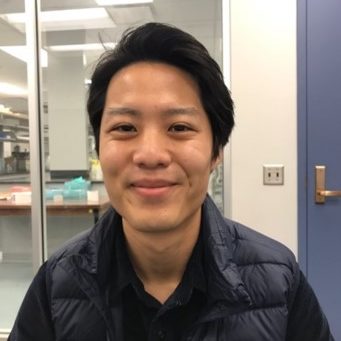
Dr. Yuzo Nishizaki
National Institute of Health Sciences, Japan
Talk #1: Accurate and precise external standardization in qNMR
Speaker: Dr Yuzo Nishizaki, National Institute of Health Sciences, Japan
Abstract: Among analytical methodologies for purity determination, quantitative 1H NMR (qHNMR) is one of the promising candidate tools. If there was inherent sample limitation, internal calibrate is unsuitable for the sample preparation, in which qHNMR employing an external calibration (EC-qHNMR), as a non-destructive and non-contaminative analytical methodology, can be a powerful tool for purity assessment. We have applied the principle of reciprocity to the EC-qHNMR and aimed to evaluate EC-qHNMR feasibility using the validation characteristics, such as accuracy and precision. The principle of reciprocity relates to two variables, i.e. signal intensity (or probe quality factor Q) and value of the 90° pulse width (90PW). Signal intensity is inversely proportional to the 90PW value. In practice, efficient tuning-and-matching (T&M) and reliable 90PW measurement can enhance signal intensity and probe behavior, and, thus improve accuracy and precision of qHNMR determination. To verify the EC-qHNMR methodology, certified reference materials, caffeine and dimethyl sulfone (aka. DMSO2), were selected as analyte and external calibrant, respectively. Initially, an automatic determination of the 90PW calibration was developed. The result of the optimal nutation experiments was identical with the outcome that is derived from the precise measurement of 360° pulse width manually. Using the automatic 90PW calibration, EC-qHNMR was performed. Both measured values via automatic and manual T&M equaled to caffeine certified value within 1% bias. Although the T&M can be performed prior to and/or after shimming, the operation sequence appears to be absolutely critical: to achieve full equilibrium at the set temperature, sample solution requires extra time to diminish the temperature gradients of the airflow inside the probe. Achievable accuracy across different NMR solvents varies with differences in thermal conductivity and leads to 2% or greater errors. With matching solvents, the demonstrated accuracy of ∼1.0% underscores the feasibility of EC-qHNMR as a highly practical research tool. The presentation is based on the published research (paper)

Dr. Adilah Bahadoor
NRC Canada
Talk #2: Practical implementation of 13C decoupling for 1H qNMR
Speaker: Dr Adilah Bahadoor, NRC Canada (Accepted)
Abstract: To obtain accurate measurements, quantitative proton NMR (qHNMR) relies on the careful selection of integrals that are free of interferences. Common interferences include minor impurities, tautomers or 13C-satellite signals of adjacent integrals. The simplest way to identify and avoid these interferences is to decouple the 13C-satellites. The GARP decoupling scheme is the most common method employed to decouple 13C-satellites, but is more prone to induce sample heating, thus hindering its application at higher fields, such as 900 MHz. We show that bi-level adiabatic decoupling provides an equally efficient means to decouple 13C-satellites at low power that was safe enough to implement at 900 MHz. To illustrate the benefits of quantitative proton NMR with carbon-13 decoupling or qH{13C}NMR, the quantitation of angiotensin II at 400 and 900 MHz is presented. The careful optimization of pertinent acquisition parameters for qH{13C}NMR will also be reviewed. The presentation is based on the published research (paper).
